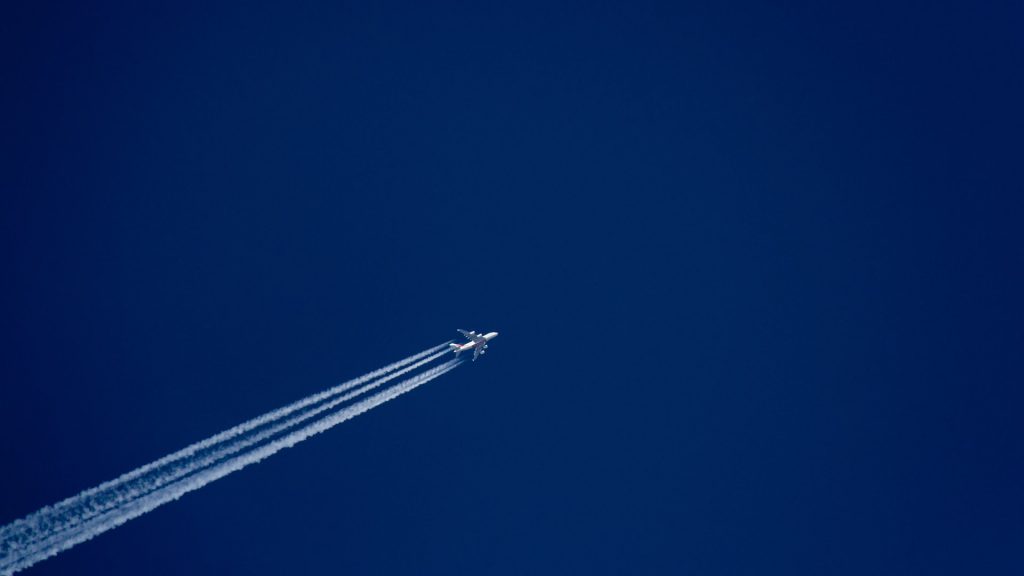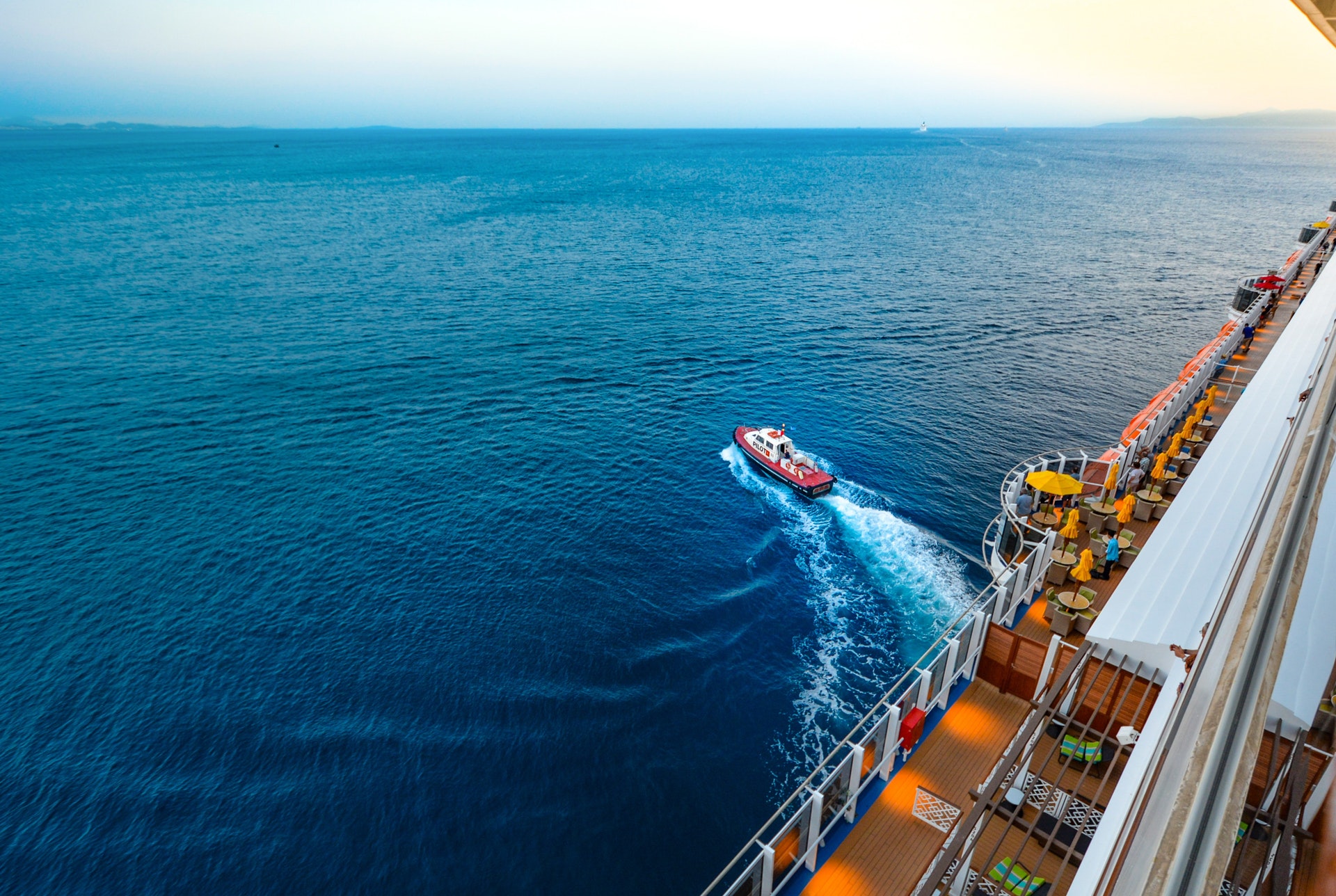It doesn’t rhyme with village and like many terms used in perfumery the word is French. Sillage (pronounced “see-Yahzh”) means “wake”, such as the trail left by a boat as it moves through water or the vapor trail of an airplane as it moves through the sky. It’s something intangible that lingers in the air, creating sensory intrigue even after the perfume wearer may have left the room.
Sillage is sometimes referred to as a “lift”since it’s not a reflection of how long scent lasts on the skin but rather as it it travels from the wearer. It can be thought of as an afterglow rather than the initial blast which you get when you spritz a perfume on. It’s that tantalizing whiff you detect in the air after someone passes by wearing a perfume.
It’s easy to see why the notion of sillage is often misunderstood. Sillage is also often confused with projection. A perfume’s projection refers to how far a perfume radiates off the skin, whether a person has to be leaning into you to smell it or can smell it from 10 feet away. Projection is what those around you perceive of the scent. Sillage, on the other hand, is the bloom of a fragrance as it radiates off the skin, not the power or intensity of a scent. For projection you need to be physically there in order for the scent to be felt by others; For sillage, you do not. Someone passing by you may leave a wake that you smell even after they are no longer in sight. Does that make sense?
A fragrance doesn’t need to belong to any particular fragrance family to leave a trail. The perfume can be fruity, floral, fresh, woody, animalic, spicy, sweet or any combination of different fragrance types. It doesn’t need to contain any specific notes, such as patchouli, either. Sillage can emanate from the top or heart notes or from the dry-down which contain typically heavier notes such as musk, sandalwood or amber.
Sillage is the product of evaporation and perfume materials evaporate at different rates. Some notes are naturally more persistent than others but a gifted perfumer can manipulate even lighter, more transient notes to stick around longer. Through chemical wizardry, Perfumers are able to engineer the lifespan of a scent.
Fragrances don’t need to to be rich in composition in order to diffuse well. Hedione, which smells vaguely like jasmine, is an extremely diffusive ingredient while managing to also smell light and airy.
Many people mistake the meaning of sillage with invasive, in-your-face perfumes that can turn any room into a gas chamber. There are some perfumes that leave an extremely strong smelling and long-lasting sillage, which is often referred to as “monster sillage”. Some of the perfumes launched in the 1980s were of this variety; Christian Dior’s Poison or Georgio Beverly Hills are prime examples.
There are different levels of sillage and preferences among perfume wearers vary widely. Some people are comfortable with and may even prefer fragrances that scream “I have arrived!” while others seek out perfumes with a more discreet whisper. Practically all of the best-selling fragrances in the US leave a prominent scented footprint.
Minimal sillage fragrances are those that stay close to the skin and produce a more intimate, understated effect. Although I can appreciate diffusive fragrances, I tend to gravitate towards more subtle and subdued perfumes and fragrance oils, especially when going out to dinner or into an office. If I really love the scent of a fragrance but find the sillage a bit much, I often will wear it as a body lotion where the sillage is less overbearing. It’s always easier to step it up by layering of fragrances than to tamper down a perfume with monster sillage.
One of the interesting things about sillage is that people are often unaware of its impact. It’s often difficult to determine the sillage of what you are wearing. One way of testing a fragrance’s sillage is to spray it once into an empty, fragrance-free room and shut the door. Open the door 5 minutes later and take a whiff. You’ll be able to tell right away if it’s too much or not enough. If you think that you are wearing a low-impact scent but people are often asking you about what you are wearing then maybe you should think again. This isn’t the 1980s after all.
Until the next time,




Hello Erica, I have been wanting to take some soap making classes and I know that I want to learn more about fragrances in order to be able to mix some very nice fragrances for my soaps. Thank you for this article. I am reading all that I can from perfume blogs. Michelle
Hi back Michelle,
Checking out perfume blogs is a good way to learn more about fragrance and perfumes. I also really recommend taking a class or two. I don’t know where you live but there are some great classes in Los Angeles you can read about in my June 2017 blog “Following My Nose to LA”. There are also some FB groups you can join like Facebook Fragrance Friends and Perfumemaking that are easy to join and are a great way to exchange information.
Wishing you a fragrant journey,
Erica
What an incredibly intricate craft. I had no idea the lengths that people have to take in order to create an attractive scent. Why must everything regarding perfume be French in nature! haha I’m actually curious though, did perfumes originate in France? Was it a product of French culture? I would love to know the history behind these things.
Thanks for the intriguing read.
xx
Helen
Hey Helen,
The French have a long tradition and skills in the art of making perfumes but France wasn’t the first country in the world to invent perfume. In antiquity, the ancient Greeks and Romans were users of scents and perfumes. Learning about the history of perfume is something I find interesting too.
Thanks for stopping by:)
Erica